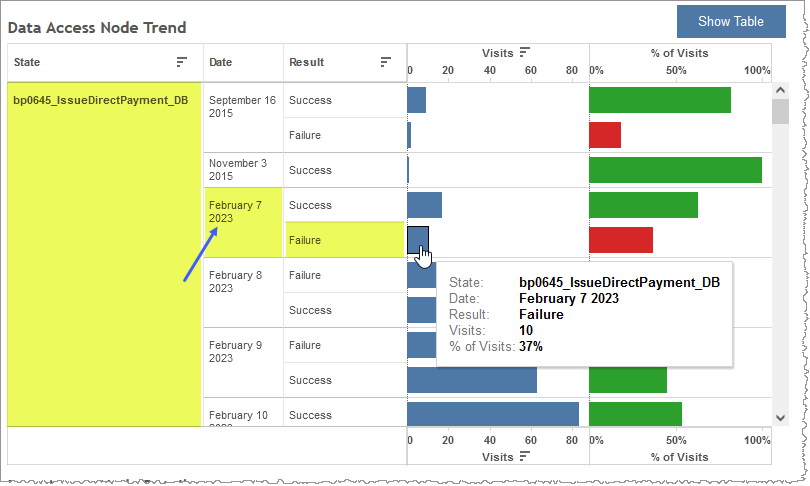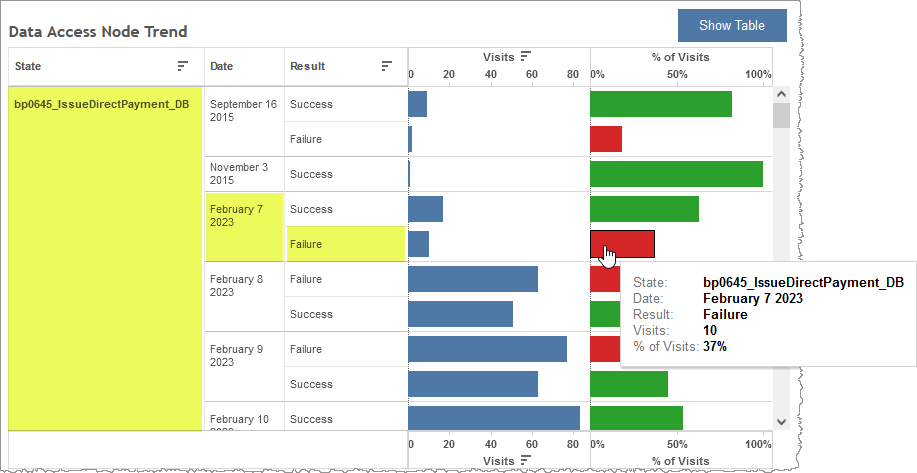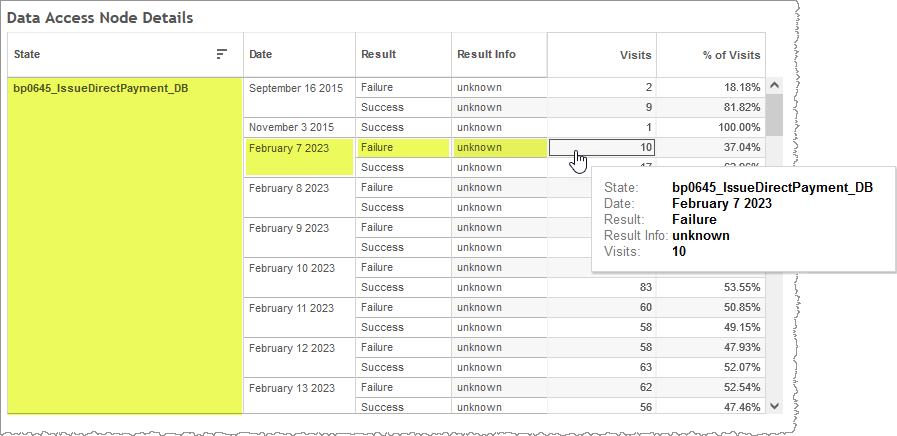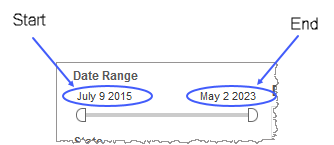Data Access Node Trend
This report graphically displays the relative proportions of database states and their status codes as each data point trends over time. It represents the percentage of lookups, for a given database state, that end in Success, Failure, or Unknown. Each bar corresponds to a raw count of instances in which a particular status code occurred for a particular database state.
In addition to the use of report filters, Nuance Insights allows you to manipulate displayed data through several other means in order to better visualize information. Select from the following to learn more:
Visualizations
Data Access Node Trend
You can view the data for this section either as a graphical visualization or in a text-only table. Both formats identify database states on the left. The Visits metric compares the raw counts of visits of individual states to one another. If you choose to use the graphical visualization, the Visits metric, as a quantity, is communicated through the length of the bar and in text in the tooltip.
Note: To see the data from the graphical visualization displayed in an alternative, textual way, click Show Table. To toggle back to the graphical view, click Show Graph.
In the example below, the bp0645_IssueDirectPayment_DB database state had 10 visits with a result of Failure for data time-stamped February 7 2023.

The following day's data (February 8 2023) shows an increase to 63 visits for the same database state and result.

The % of Visits (right) side of the graph visualizes the relative distribution of results for a given database state for a given time increment (either a day or hour, depending on your choice of summarization data).
In the example below, of all visits with a database state of bp0645_IssueDirectPayment_DB for data time-stamped February 7 2023, 37% had a result of Failure. Compare the bar length of this calculated metric to other bars with the same result (in this case Failure) to draw conclusions about how this metric trends over time.

The alternative, tabular visualization of the same summary data communicates through text only.
Data Access Node Details
This table presents a more detailed description of database state information than what is visible in the Summary visualization. The Details table makes individual Result info strings of results the active dimension and reports visit counts and percent of visits as metrics to that dimension.
In the example below, of all visits with a database state of bp0645_IssueDirectPayment_DB for data time-stamped February 7 2023, having a result of Failure and Result info code of unknown, there were 10 visits which, when compared to all visits for this state and day, is 37.04% of all visits.

Filters
Increase the specificity of your view's reporting by applying filters to the data.
Clicking Include values displays only those data possessing the selected values. All other data are hidden from the visualization.
By contrast, clicking Exclude values displays only those data that do not possess the selected values.

Date Range
The Date Range filter is a slider with two moveable sides. By narrowing the date range, you display only data falling within the range.

In addition to the slider, the filter allows you to manually specify start and end points to the range.

To select a date with the date picker, click the Start region to pick a date from the date picker widget. Do the same with the End region.

State
Reduce the volume of reported data by specifying which database state to include while excluding all other unselected states.
Selecting All effectively negates the filtering effect of this filter. Clearing the All checkbox filters out all states. This is particularly useful if you want to select just a few states. By clearing the All checkbox, and then selecting the few you would like to include, you avoid the step of individually having to clear each of the individual checkboxes of the states you do not want to include.
Result legend
Use this tool to highlight data having one or several specified results.

Custom filters
This report accommodates customizable filters.
Customizable filters narrow the scope of the reported dataset by including or excluding data with identifiable attributes. These attributes may be about the conversation itself or about an event that may have happened during the conversation.
For more information about how to add customized filters to your view, contact your Nuance Professional Services representative.
Note: If you would like to modify this or any report, Nuance Communications, Inc. recommends you contact Nuance Professional Services.
